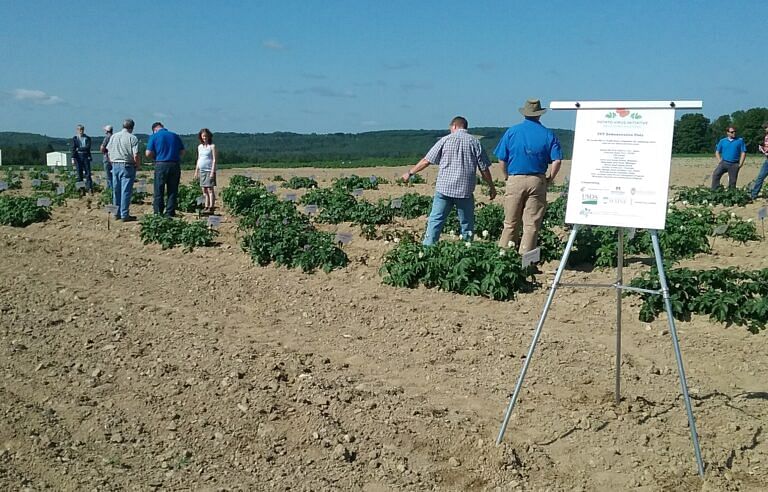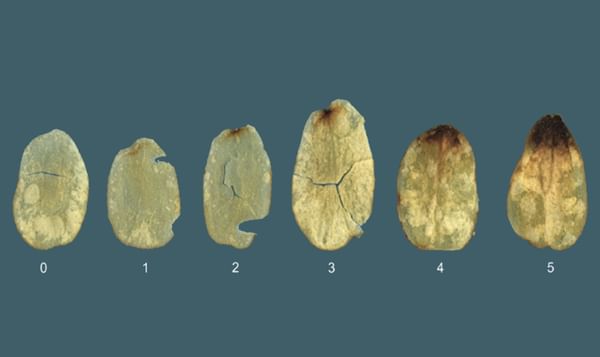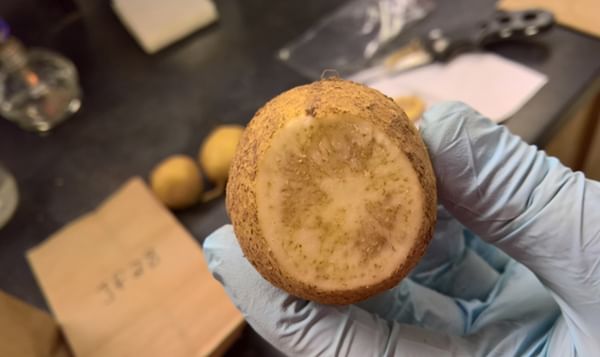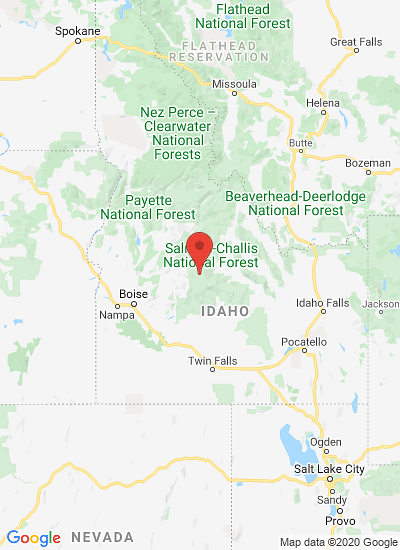PVY demonstration plot trial in Washington on July 13, 2022, drew crowds of growers and crop consultans to see symptomps of three different straints of the virus in more than 20 potato cultivars.
Battling potato viruses: innovations for a healthier potato harvest

Two years ago, the Potato Research Advisory Committee (PRAC) identified and wrote letters of support for a project known as 'The Potato Virus Initiative: Developing Solutions'.
The researchers secured backing from the Specialty Crop Research Initiative (SCRI) funding source to advance research on the management of potato tuber necrotic viruses: potato virus Y (PVY) and potato mop-top virus (PMTV). The primary objectives of this project are to improve disease diagnosis, virus detection, and strain typing.
Over the last two years, the research team has successfully optimized tools and conditions for direct tuber testing for PVY.
This advancement will expedite the certification process and help the industry swiftly identify and remove PVY-infected seed lots from the system. Now, the research is focused on developing management tactics and techniques to prevent the in-season spread of PVY.
The team is moving forward with its next set of objectives: to identify resistance sources against PMTV and powdery scab. They have implemented a greenhouse-based screening methodology to select PMTV-resistant potato lines to accomplish this.
These research findings are anticipated to substantially impact preventing PMTV infections at the initial stages of the breeding process!
Consistent with PRAC’s overarching objective, this project aims to integrate grower education based on the research outcomes identified. Impressively, this project demonstrated robust outreach efforts. In the 2022 growing season, the team held three field days in Maine, Wisconsin, and Washington.
Demonstration plots were set up to show visual symptoms of three PVY strains in about 30 potato cultivars. The selection of potato cultivars reflected regional preferences for each of the three locations.
These demonstration plots were very popular with the growers and generated much interest and attention from the industry.
Additionally, the project’s research findings have been presented and discussed at national, regional, and state meetings across the country. Information, articles, videos, and updates are available on the project’s website and social media, including Instagram and Twitter.
In the future, the team anticipates developing a series of recommendations to mitigate the in-season spread of PVY and PMTV, enhance detection and diagnostic methods for certification agencies, and identify new sources of resistance to PMTV and powdery scab for the benefit of the industry.

The researchers secured backing from the Specialty Crop Research Initiative (SCRI) funding source to advance research on the management of potato tuber necrotic viruses: potato virus Y (PVY) and potato mop-top virus (PMTV). The primary objectives of this project are to improve disease diagnosis, virus detection, and strain typing.
Over the last two years, the research team has successfully optimized tools and conditions for direct tuber testing for PVY.
This advancement will expedite the certification process and help the industry swiftly identify and remove PVY-infected seed lots from the system. Now, the research is focused on developing management tactics and techniques to prevent the in-season spread of PVY.
The team is moving forward with its next set of objectives: to identify resistance sources against PMTV and powdery scab. They have implemented a greenhouse-based screening methodology to select PMTV-resistant potato lines to accomplish this.
These research findings are anticipated to substantially impact preventing PMTV infections at the initial stages of the breeding process!
Consistent with PRAC’s overarching objective, this project aims to integrate grower education based on the research outcomes identified. Impressively, this project demonstrated robust outreach efforts. In the 2022 growing season, the team held three field days in Maine, Wisconsin, and Washington.
Demonstration plots were set up to show visual symptoms of three PVY strains in about 30 potato cultivars. The selection of potato cultivars reflected regional preferences for each of the three locations.
These demonstration plots were very popular with the growers and generated much interest and attention from the industry.
Additionally, the project’s research findings have been presented and discussed at national, regional, and state meetings across the country. Information, articles, videos, and updates are available on the project’s website and social media, including Instagram and Twitter.
In the future, the team anticipates developing a series of recommendations to mitigate the in-season spread of PVY and PMTV, enhance detection and diagnostic methods for certification agencies, and identify new sources of resistance to PMTV and powdery scab for the benefit of the industry.

PVY demonstration plot trial in Maine on July 13, 2022, drew crowds of growers and crop consultants to see symptoms of three different strains of the virus in more than 20 potato cultivars.
Like to receive news like this by email? Join and Subscribe!
Join Our Telegram Channel for regular updates!
Highlighted Company
Sponsored Content
Sponsored Content
Sponsored Content
Sponsored Content
Sponsored Content








